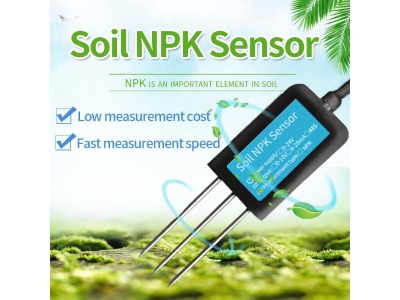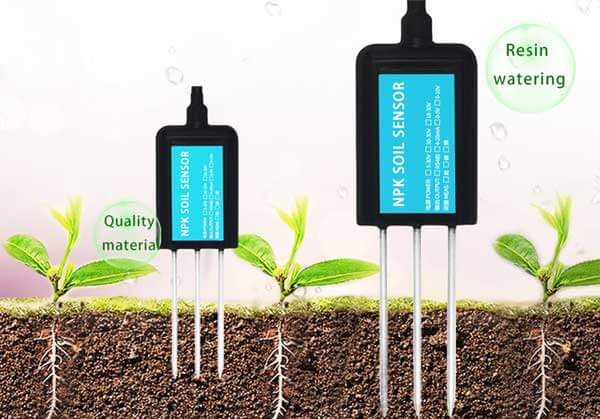Agriculture is undergoing a technological transformation, with precision agriculture emerging as a game-changer. Precision agriculture leverages advanced technologies such as soil sensors to optimize crop management practices. Soil sensors provide real-time data on soil conditions, allowing farmers to make informed decisions about irrigation, fertilization, and other critical factors that impact crop yield and quality. This article explores the role of soil sensors in empowering precision agriculture and revolutionizing modern farming practices.

The Need for Precision Agriculture
Traditional farming methods often rely on generalized approaches to crop management. Farmers typically apply water, fertilizers, and pesticides uniformly across their fields, regardless of variations in soil conditions. This approach can lead to inefficient resource utilization, environmental degradation, and reduced crop yields. Precision agriculture aims to address these challenges by customizing farming practices based on real-time data and site-specific conditions.
Soil Sensors: The Key to Precision Agriculture
Soil sensors are at the heart of precision agriculture, providing critical information about soil moisture levels, nutrient content, pH levels, and temperature. These sensors are typically buried in the ground at different depths within the root zone, allowing for accurate monitoring of soil conditions. The data collected by soil sensors enables farmers to optimize irrigation schedules, tailor fertilizer applications, and detect potential issues such as nutrient deficiencies or excesses.
Types of Soil Sensors
Several types of soil sensors are available, each designed to measure specific soil parameters. Some common types include:
Soil Moisture Sensors: These sensors measure the volumetric water content in the soil, indicating the amount of water available to the plants. Farmers can use this data to determine when and how much to irrigate, avoiding both under and over-watering.
Nutrient Sensors: These sensors measure the concentration of essential nutrients in the soil, such as nitrogen, phosphorus, and potassium. By understanding the nutrient levels, farmers can apply fertilizers more precisely, reducing waste and minimizing environmental impact.
pH Sensors: pH sensors measure the acidity or alkalinity of the soil. Maintaining an optimal pH level is crucial for nutrient availability to plants. pH sensors enable farmers to adjust soil pH if necessary, ensuring optimal crop growth.
Temperature Sensors: Temperature sensors monitor soil temperature, which affects seed germination, plant growth, and microbial activity. By tracking temperature variations, farmers can make informed decisions regarding planting schedules and other management practices.
Benefits of Soil Sensor Technology
Improved Resource Management: Soil sensors provide real-time data on soil conditions, enabling farmers to make precise irrigation and fertilization decisions. This targeted approach helps reduce water usage, minimize fertilizer runoff, and optimize resource utilization, leading to cost savings and environmental sustainability.
Increased Crop Yield and Quality: By tailoring crop management practices to specific soil conditions, farmers can optimize plant health and nutrient uptake. This can result in higher crop yields, improved quality, and reduced losses due to nutrient deficiencies or excesses.

Sustainability and Environmental Stewardship: Precision agriculture promotes sustainable farming practices by minimizing the use of water, fertilizers, and pesticides. By applying precise amounts of inputs only when necessary, farmers can protect water resources, reduce chemical pollution, and preserve soil health.
Remote Monitoring and Automation: Soil sensors can be integrated into farm management systems, allowing for remote monitoring and data analysis. Farmers can access real-time information about their field conditions from anywhere, making proactive decisions and streamlining farm operations.
Challenges and Future Developments
While soil sensor technology has advanced significantly, there are still challenges to overcome. Ensuring sensor accuracy, managing data influx, and integrating sensor data with other farm management systems can be complex. However, ongoing research and development efforts are focused on improving sensor reliability, standardizing data formats, and enhancing data interpretation algorithms.
Future developments in soil sensor technology include the integration of wireless networks, artificial intelligence, and machine learning algorithms. These advancements will enable even more precise and automated decision-making, allowing for real-time adjustments in crop management strategies.
Conclusion
Soil sensors are revolutionizing modern agriculture by empowering precision agriculture practices. By providing real-time data on soil moisture, nutrients, pH levels, and temperature, these sensors enable farmers to m
